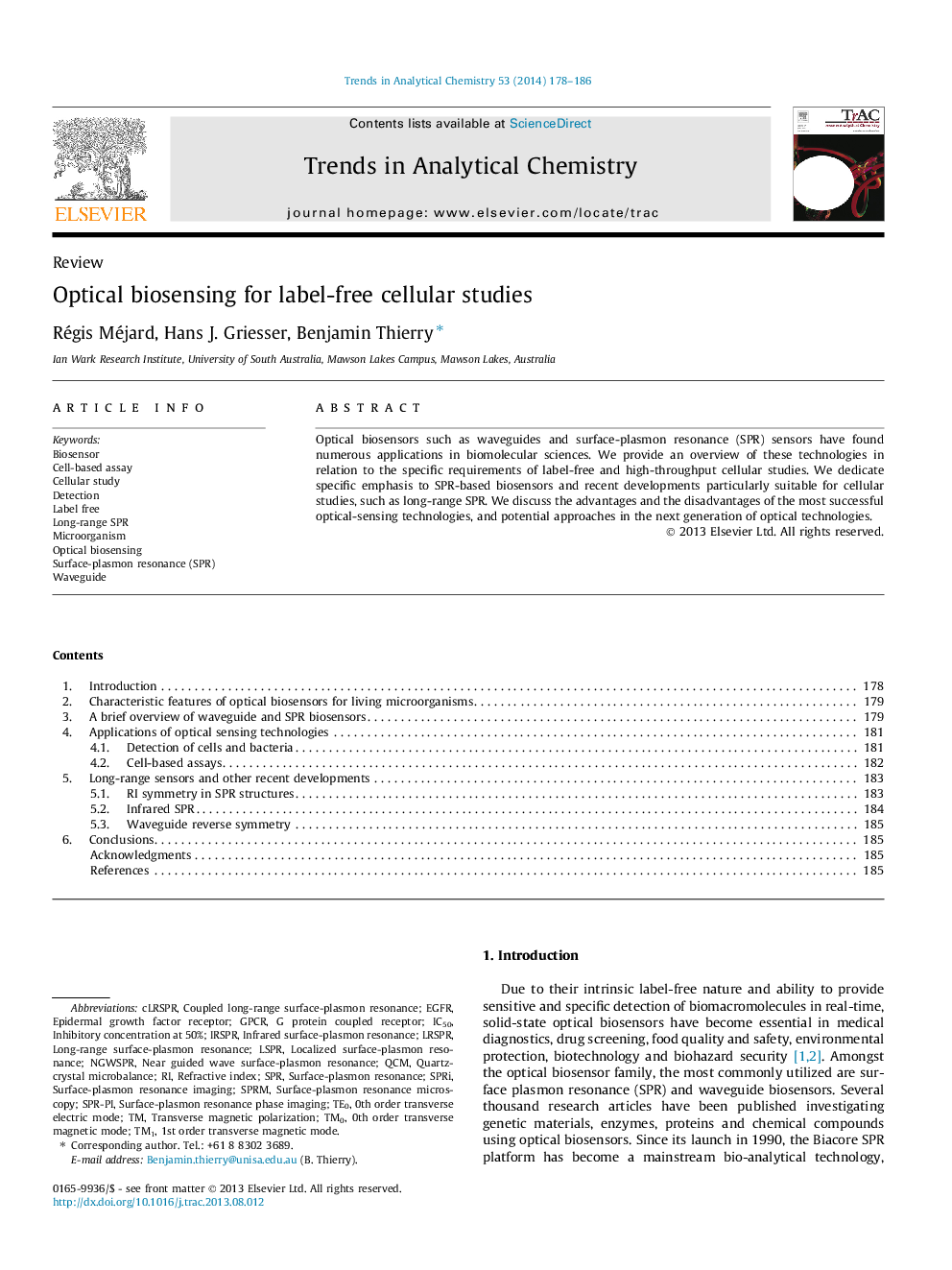| Article ID | Journal | Published Year | Pages | File Type |
|---|---|---|---|---|
| 1248457 | TrAC Trends in Analytical Chemistry | 2014 | 9 Pages |
•The most common optical biosensors are waveguides and surface-plasmon resonance.•The output signal depends on local concentration and distance from the surface.•Waveguide and surface-plasmon resonance are comparable but there are nuances.•Optical biosensors can be applied to detect microorganisms and in cell-based assays.•Long-range structures overcome the shallow probe distance and can be more sensitive.
Optical biosensors such as waveguides and surface-plasmon resonance (SPR) sensors have found numerous applications in biomolecular sciences. We provide an overview of these technologies in relation to the specific requirements of label-free and high-throughput cellular studies. We dedicate specific emphasis to SPR-based biosensors and recent developments particularly suitable for cellular studies, such as long-range SPR. We discuss the advantages and the disadvantages of the most successful optical-sensing technologies, and potential approaches in the next generation of optical technologies.
